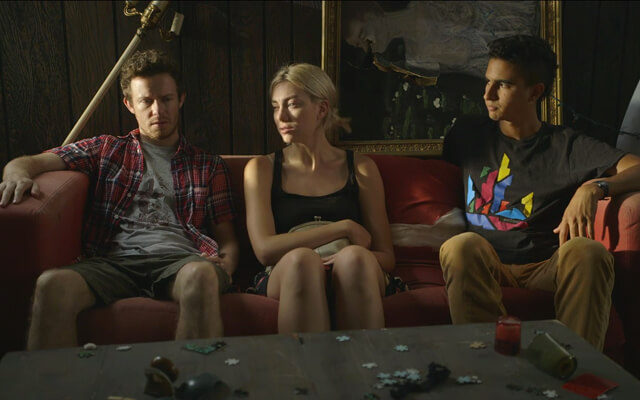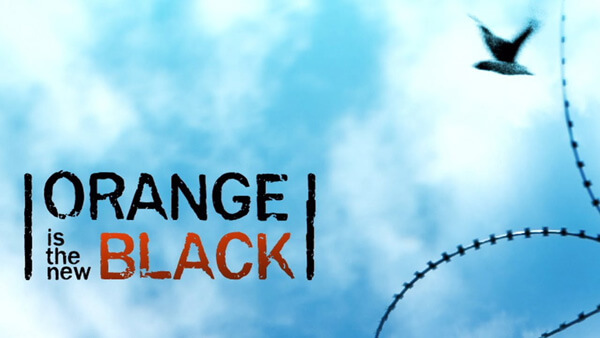Pressing out humor from heartache is a specialty of only the most advanced storytellers. And it’s a trademark of Hannah Gadsby.
In her Off-Broadway solo show “Douglas,” in New York through September 14, Gadsby’s personal stories take many winding routes to humor. She covers intimate subject matter, like her autism diagnosis and an awkward sexual incident. But she also explores grand topics like Americans’ self-obsession and the overlooked reality of male hormonal cycles. Despite each topic seeming at first to offer few punchlines, each of her tales leads, thankfully, to laughter.
It’s all part of Gadsby’s atypical approach to storytelling/ stand-up /monologuing/ lecturing. Her art defies singular classification, while advancing the possibilities of comedy in general.
Upon entering the Daryl Roth Theatre, the first sign you’re in for something different are the ushers adamantly reminding you to power-off your phone, after which they lock it in a neoprene bag sealed with a magnet. (At the show’s end, unlocking the bag takes just a moment.) With that separation of show and cell service, Gadsby has mandated full attention to her delicately crafted performance.
We’re also informed upon entry that the show is about one hour and 45 minutes long, with no intermission. People may raise eyebrows at this, wondering if that timeline is an exaggeration for a solo show. It is not, and the time whisks by.
During her nearly two-hour set, Gadsby is riveting and remarkable in the most glorious ways. After some pleasant salutations and giggles, she minces no words about why she — and all the rest of us — are probably there. It feels momentarily awkward to recognize that her 2018 Netflix special “Nanette” is the sole reason many of us became fans, since it’s clear that we should’ve been well acquainted with Gadsby’s gorgeous mind long before that.
Through her uniquely direct style, Gadsby maintains clear messages. Many of them serve to reinforce her work as it exists outside any pre-established comedy mold. She declared as much in a 2017 tweet: “I’LL SETTLE THIS: My show is NOT stand-up comedy because I got jack of an art form designed by men for men. Female artists often defy genre.
On stage, Gadsby covers a sophisticated slate of topics. What’s most uncommon is that she lists them as a sort of table of contents at the top of the show, going to so far as to tell us how we’ll respond to each theme (usually with laughter, sometimes with hesitation). It’s her way of delivering meta humor, “adding layers to your mirth cake,” she predicts.
She makes us aware that, as an American audience, we will be ribbed, but to “not invest” in each joke since it’s all in good fun. It’s a little like getting a wry reprimand you know you deserved. (One can only wonder how sharp the American ribbing must be when she performs abroad. As she says in her Australian accent, “That’s a thing you [Americans] don’t know: Other cultures reference themselves without consulting you first.”)
From her opening list, we know also that she’ll unpack some backstory about her autism that’s honest and enlightening. She’ll take us into her doctor’s office to segue into women’s emotional stereotypes and the lack of attention to men’s emotions. Then we slink into her boudoir for, believe it or not, a lesson on the inconvenient ways autism can make her mind work, especially during a session of dirty talk.
Through Gadsby’s distinct genius, each of these seemingly solemn vignettes is sprinkled with laughs. They are what keep our ears unflinchingly attuned to every word.
As in “Nanette,” Gadsby’s most nuanced critiques center around the patriarchy and the “skidmark of misogyny.” They’re actually tied to the show’s title. Yes “Douglas” is the name of her dog; but it’s also the name of a female body part most of us never even knew existed.
One big highlight of the show is a byproduct of her art history background. Armed with an on-stage projection screen, Gadsby schools the audience on Renaissance-era works and artists. It’s an entertaining lecture, all the while proving how institutionalized misogyny spans centuries of female depictions. In turn, those “great” works of art have defined women’s roles from mother to muse to sex object, she notes — but in a fun way!
Gadsby’s bluntness about men’s privilege and predetermined power are the words many of us long to hear — including many of the fellows filling the theater’s seats.
Yet at the end of this reviewer’s show, Gadsby’s notion of a meta experience came alive on this very issue. As we exited, I joined audience members in the queue to snappily reopen our sealed cell-phone bags. I was impressed that it seemed each person obeyed the request to have their phones locked up, a sign of respect for Hannah Gadsby.
Then I saw one tall, white, well-dressed man already on his lit-up phone, scrolling through emails. We’d just heard Gadsby speak at length about male privilege, and here was this man proving her point, unabashedly demonstrating his own entitlement to do as he pleases.
Yes, Gadsby’s gift is laying out truth for eager ears, even if she’s preaching to the choir. Her greater challenge, however, might be getting those who think they don’t need her truth to actually listen.
HANNAH GADSBY’S “DOUGLAS” | Daryl Roth Theatre, 101 E. 15th St. at Union Sq. E. | Through Sept. 14: Tue.-Fri. at 8 p.m., Sat. at 6 p.m. & 9 p.m. | Tickets start at $65.50-$227 at ticketmaster.com or 800-745-3000 | One hr., 50 mins., with no intermission |
Kelsy Chauvin is a writer and photographer based in Brooklyn, specializing in travel, culture, and LGBTQ interests. Follow her on Twitter and Instagram @kelsycc.


































